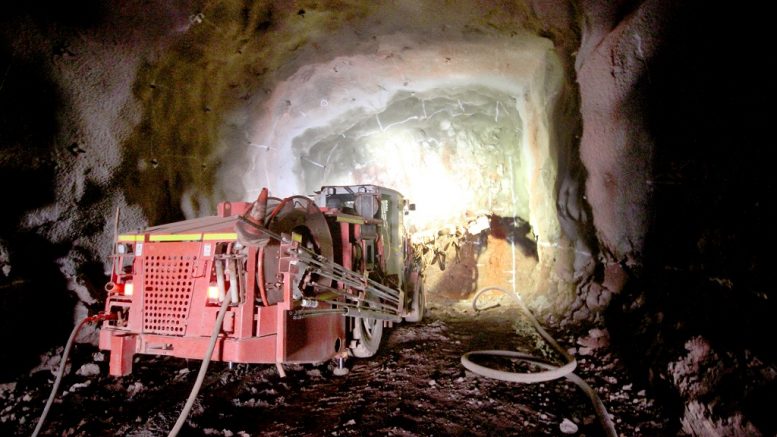VANCOUVER — The electric vehicle revolution is accelerating, and it will inevitably change the orientation of the mining industry, Robert Friedland, executive chairman of Ivanhoe Mines, argued during a presentation at the Sprott Natural Resource Symposium held in Vancouver in July.
Friedland said that rapid urbanization, combined with efforts to reduce air pollution, will lead to a ramping up of electric vehicle production. And the demand for the metals needed to build them — including his favourites copper, platinum, palladium, zinc, nickel and cobalt — will rise as a result.
“This is an era of unprecedented change. It’s really happening,” Friedland said. “For those of you who deny this phenomenon, you’re going to miss this massive disruption opening soon at a theatre near you.
“Air pollution isn’t just in China — it’s in Paris, Greece, Madrid and Mexico City,” he said. “In Beijing, the government is on an air pollution jihad. It’s engaging in the largest enterprise ever to clean the air, and they’re going to do it because China is a command economy.”
He noted that just one electric vehicle contains 150 kg copper — or four times more than a conventional vehicle — and even more copper will be needed to electrify developing countries.
“We aren’t discovering enough copper to meet future copper demand. We need much higher copper prices to stimulate the painful enterprise of exploration, development and production. We’re on the edge of a ski slope and looking down.”
Friedland predicts that copper — which trades at US$6,290 per tonne — will remain in a “modest” deficit this year, but that by 2021 the world will “wake up.”
He said if the world’s economy grows at 1.8% a year — a number predicted by management consulting firm McKinsey & Company — by 2030, copper will be in “massive deficits,” even without a wholesale, global changeover to electric vehicles.
Friedland’s bullishness on copper is one reason Ivanhoe and 39.6%-owner and partner Zijin Mining Group are developing their world-class Kamoa-Kakula copper project in the Democratic Republic of the Congo (DRC).
Friedland heralds Kamoa-Kakula as the world’s largest undeveloped copper deposit, and it’s still growing. A resource update in June included the project’s new, high-grade Kakula discovery, which brought the resource to 1 billion indicated tonnes of 3.02% copper, plus 191 million inferred tonnes of 2.37% copper.
In his presentation, Friedland also argued for a promising outlook for nickel and cobalt. He said only 4% of the metal value in a lithium battery is lithium, whereas 80% of the value is in nickel sulphate, with cobalt representing 15%.
“If we’re going to have electric cars, the winners are going to be nickel and cobalt. The metal that’s scarce is cobalt, and since January last year, cobalt has been the best performing metal. Gold hasn’t tripled,” he said.
In response to the burgeoning cobalt market, Friedland now has a 19.9% interest in Clean TeQ Holdings — a junior explorer advancing the world-class Syerston nickel-cobalt-scandium project in New South Wales, Australia.
“Green funds are all the rage,” he said. “They have access to massive pools of capital — much larger than the money that attracts the gold bugs. I wouldn’t be surprised if shares of Clean TeQ don’t outperform shares of Ivanhoe.”
For electric vehicles that use a hydrogen fuel cell rather than a lithium battery, platinum group metals (PGMs) are needed, he added, with up to 30 grams platinum used in each car.
“China plans to build 60 million cars, and if just one out of ten of those cars is powered by a hydrogen fuel cell, that’s equal to the total world platinum production,” Friedland said. “Platinum is rare in the crust, much rarer than gold. I’d buy platinum over gold — there are no platinum reserves sitting in the central bank vaults waiting to be puked out.”
Ivanhoe has its 64%-owned Platreef PGM project, a world-class deposit it found in South Africa’s prolific Bushveld Igneous Complex.
The company’s definitive feasibility study envisages a 4-million-tonne-per-year operation producing 476,000 oz. platinum, palladium, rhodium and gold, plus 33 million lb. nickel and copper per year.
Ivanhoe’s third main asset, the Kipushi zinc project in the DRC, also has a bright future, Friedland argued.
“After cobalt, zinc was the second best performing metal last year,” he said. “Goldman Sachs is predicting a huge shortage of zinc, and the world’s zinc mines are closing. When you look at all the zinc projects out there, Kipushi sticks out like a sore thumb. It averages 45% zinc equivalent, so it’s essentially a money mine. Every cubic metre holds $5,000 worth of zinc.”


Be the first to comment on "Sprott Conference: Friedland pitches metals used in EVs"